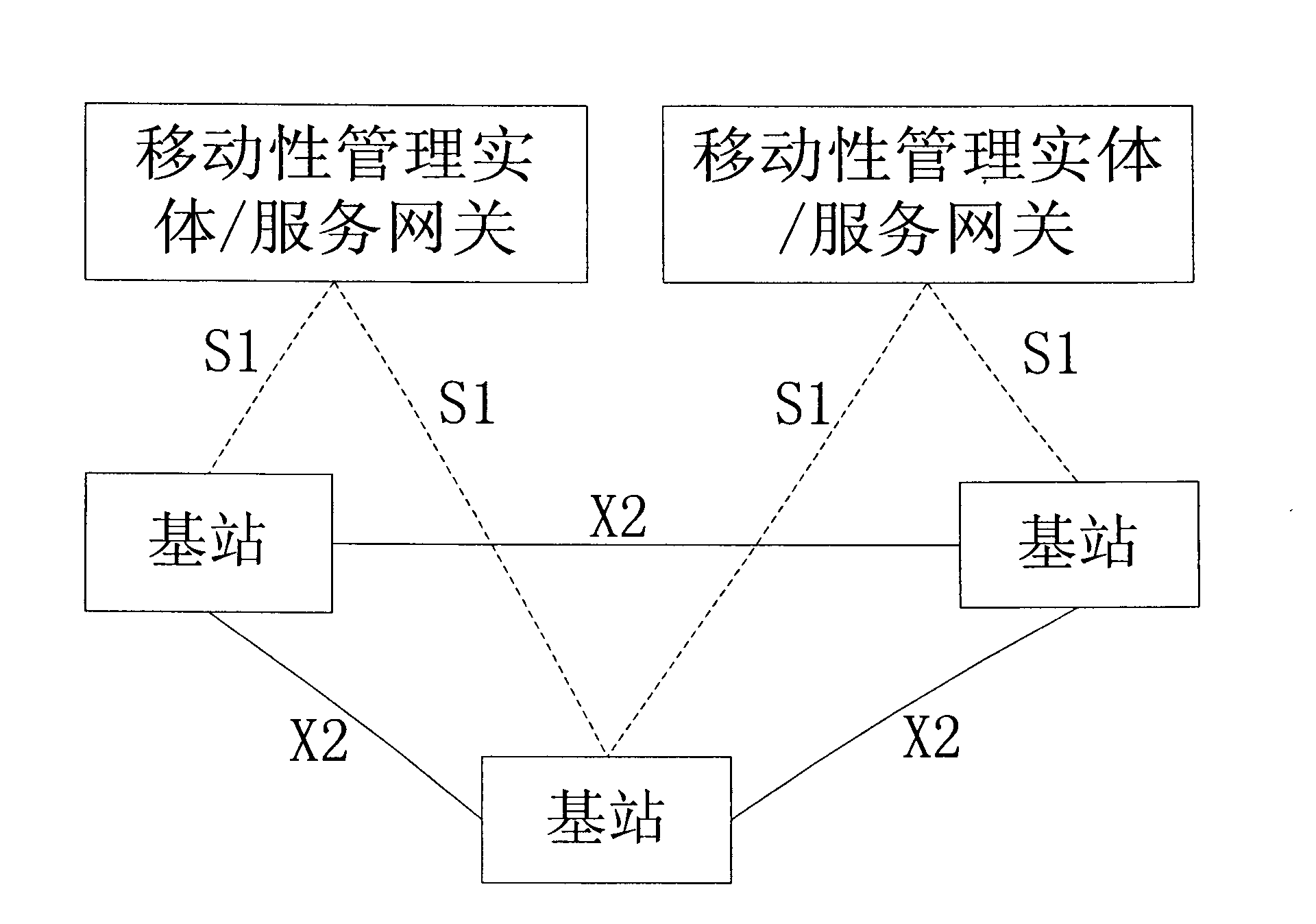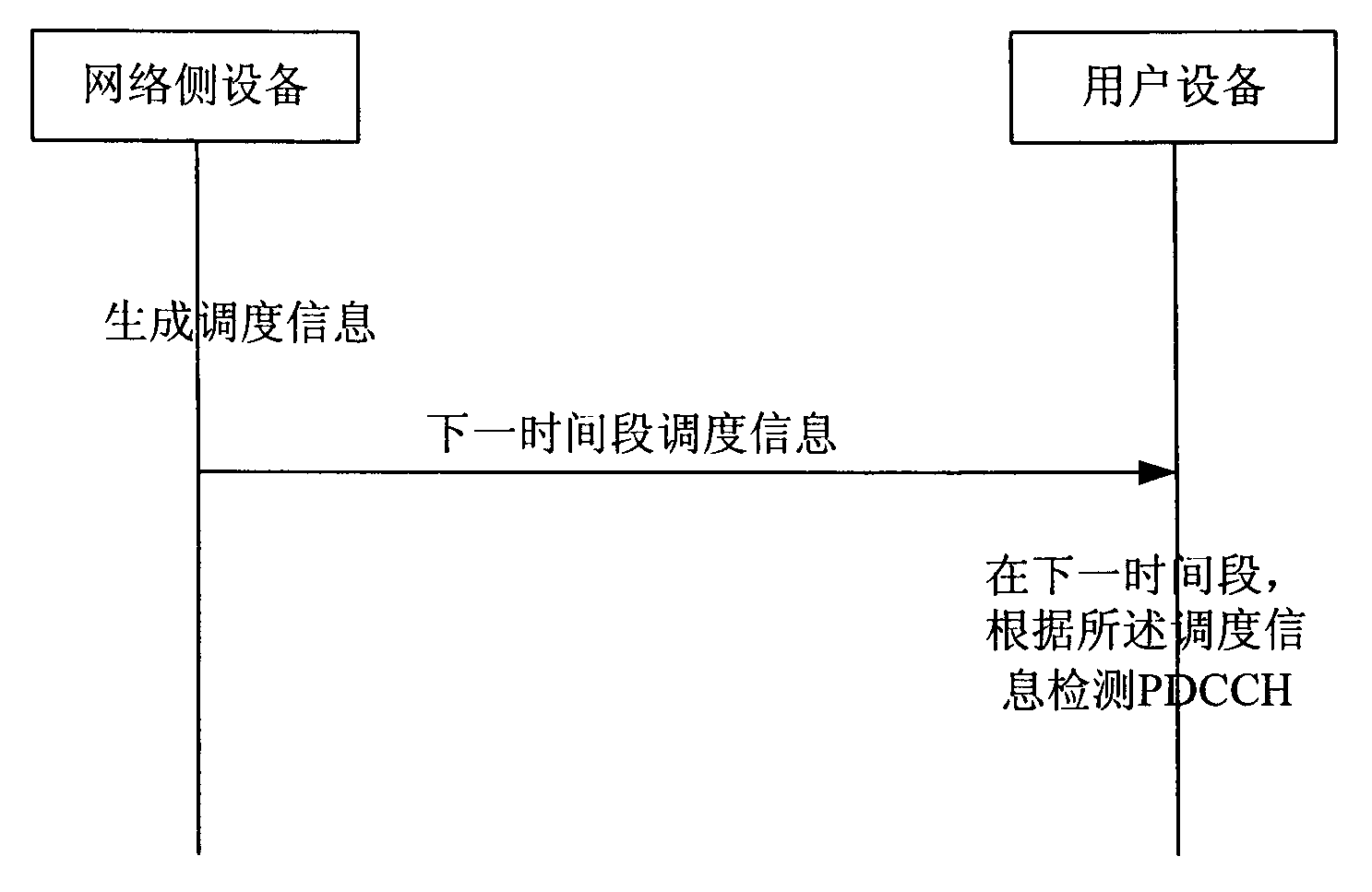Method and system for transmitting scheduling information
A technology for dispatching information and signaling, which is applied in the field of wireless communication, can solve problems such as no solution provided, multi-computing energy, etc., and achieve the effect of avoiding energy consumption, avoiding invalid calculation and energy loss
- Summary
- Abstract
- Description
- Claims
- Application Information
AI Technical Summary
Problems solved by technology
Method used
Image
Examples
example 1
[0072] In the LTE system, a UE is located in a serving cell and is in a connected state, and the UE has an uplink and a downlink working carrier respectively. The UE needs to continuously detect the PDCCH, and detect its own PDCCH according to its own RNTI. In order to realize the present invention, the network side notifies the UE of the scheduling information of the next time period through the air interface signaling. After receiving the scheduling information, the UE will know in advance when the network will schedule itself, and the UE can detect the PDCCH at an appropriate time. Ineffective operation and energy loss caused by continuous PDCCH detection are avoided.
[0073] The network side transmits the scheduling information through radio resource control (Radio Resource Control, referred to as RRC) signaling, medium access control layer signaling, or physical downlink control channel (Physical Downlink Control Channel, referred to as PDCCH) and other air interface sig...
example 2
[0082] The application scenario of Example 2 is an LTE Advance system, and the UE is in an idle state in a carrier aggregation cell. The component carriers contained in the carrier aggregation cell are in Band 1 (Band 1), there are three consecutive component carriers CC(f1), CC(f2), and CC(f3) in the downlink, and there are also three consecutive carrier CCs in the uplink ( f4), CC(f5), CC(f6), it should be noted that in this example 2, the frequency information of each component carrier is used to identify the component carrier, but the present invention does not limit the way of carrier identification. The three downlink carriers all send system messages and paging messages.
[0083] At a certain moment, the UE initiates random access on the uplink CC (f4) and downlink CC (f1), and successfully accesses the cell of the carrier aggregation. Since the UE supports multiple carriers and has a large traffic flow, the base station allocates component carriers UL CC (f5) and DL C...
example 3
[0092] The application scenario of this example is an LTE Advance system, and the UE is in an idle state in a carrier aggregation cell. The component carriers contained in the carrier aggregation cell are in Band 1 (Band 1), there are three consecutive component carriers CC(f1), CC(f2), and CC(f3) in the downlink, and there are also three consecutive carrier CCs in the uplink ( f4), CC(f5), CC(f6), it should be noted that in this example, the frequency information of each component carrier is used to identify the component carrier, but the present invention does not limit the way of carrier identification. The three downlink carriers all send system messages and paging messages.
[0093] At a certain moment, the UE initiates random access on the uplink CC (f4) and downlink CC (f1), and successfully accesses the cell of the carrier aggregation. Since the UE supports multiple carriers and has a large traffic flow, the base station allocates component carriers UL CC (f5) and UL ...
PUM
 Login to View More
Login to View More Abstract
Description
Claims
Application Information
 Login to View More
Login to View More - R&D
- Intellectual Property
- Life Sciences
- Materials
- Tech Scout
- Unparalleled Data Quality
- Higher Quality Content
- 60% Fewer Hallucinations
Browse by: Latest US Patents, China's latest patents, Technical Efficacy Thesaurus, Application Domain, Technology Topic, Popular Technical Reports.
© 2025 PatSnap. All rights reserved.Legal|Privacy policy|Modern Slavery Act Transparency Statement|Sitemap|About US| Contact US: help@patsnap.com



